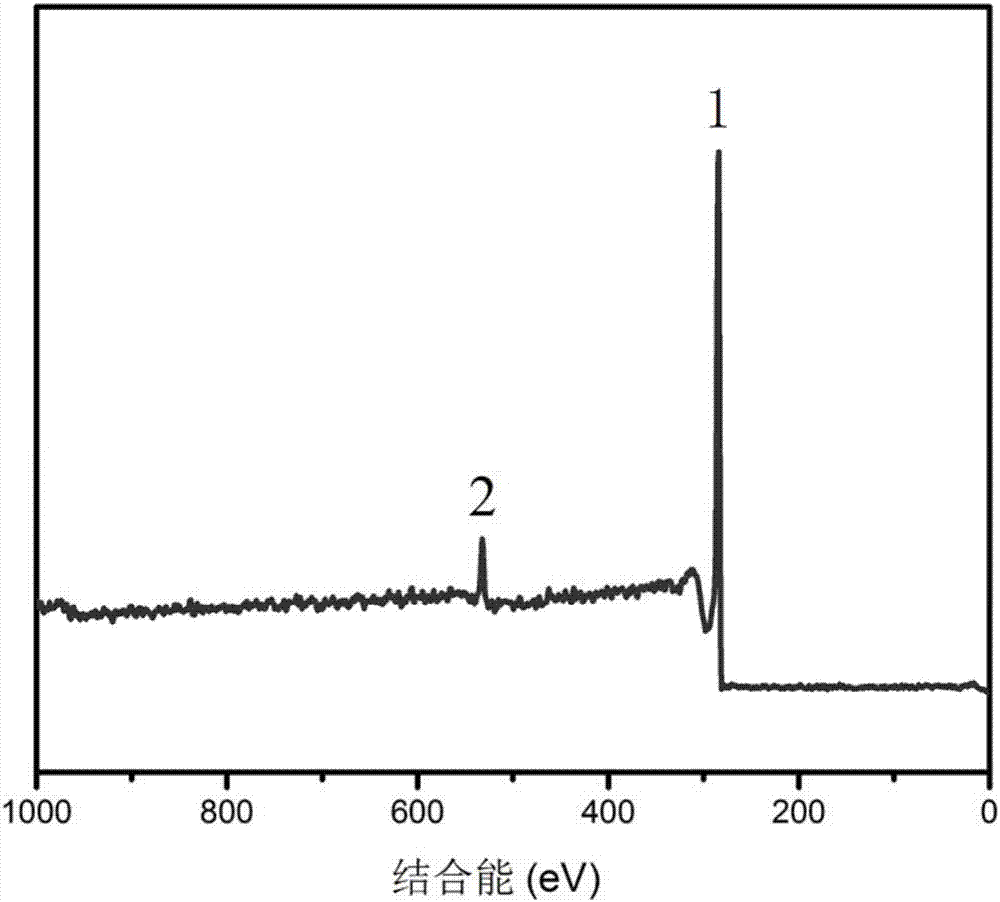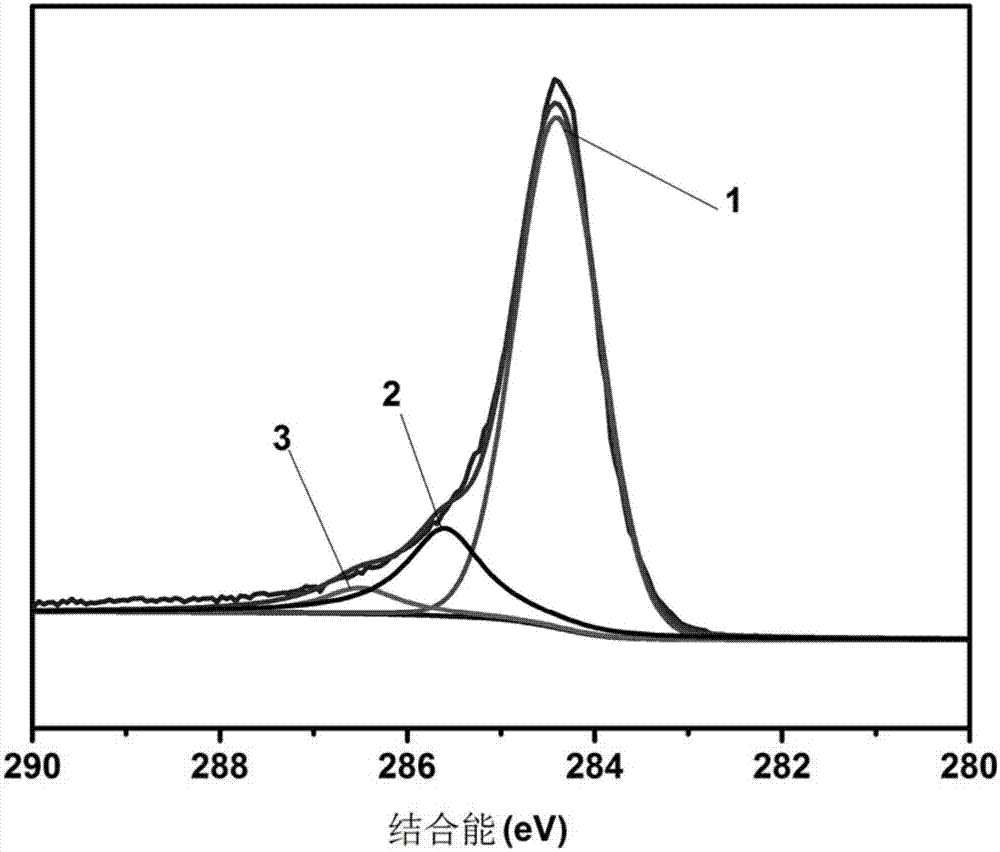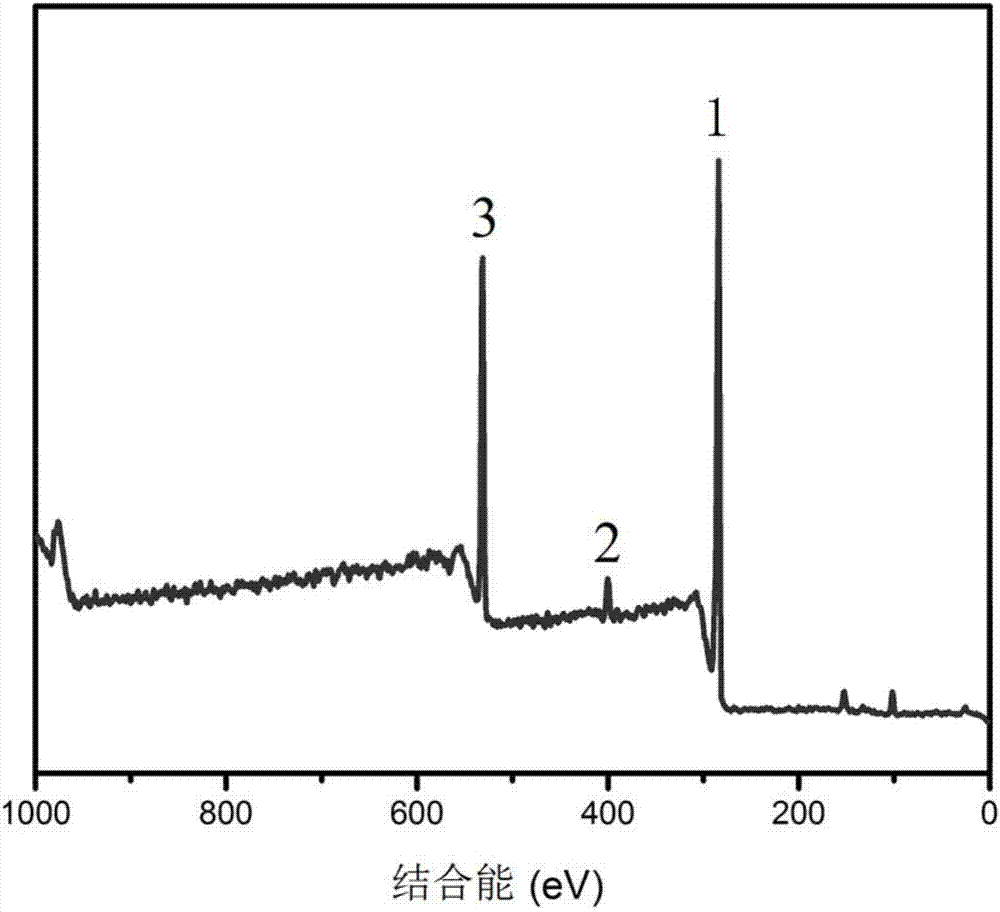Method for grafting hyperbranched aromatic polyamide to surface of carbon fibers
A polyaramid, surface grafting technology, applied in the direction of carbon fiber, fiber treatment, textile and paper making, etc., can solve the problem of low interfacial bonding strength, and achieve the effect of improving compatibility, improving application potential and increasing N content
- Summary
- Abstract
- Description
- Claims
- Application Information
AI Technical Summary
Problems solved by technology
Method used
Image
Examples
specific Embodiment approach 1
[0052] Specific embodiment 1: This embodiment is a method for grafting hyperbranched polyaramid on the surface of carbon fiber, which is specifically completed according to the following steps:
[0053] 1. Extraction treatment of carbon fiber:
[0054] Put the carbon fiber into a Soxhlet extractor filled with acetone, and then heat the acetone to 75°C~85°C. The acetone is continuously steamed out and condensed in the Soxhlet extractor, so that the impurities on the surface of the carbon fiber are continuously obtained in the distilled acetone Cleaning, the cleaning time is 48h-72h, then the carbon fiber is taken out and placed in an oven at a temperature of 70℃~80℃ to dry for 12h-24h to obtain carbon fiber with epoxy coating removed;
[0055] 2. Oxidation:
[0056] ①. Immerse the carbon fiber from which the epoxy coating has been removed into a potassium persulfate / silver nitrate mixed aqueous solution, heat it to 60℃~80℃, and then keep the temperature at 60℃~80℃ for 1h~2h to obtain t...
specific Embodiment approach 2
[0090] Specific embodiment two: this embodiment is different from specific embodiment one in that: the dried oxidized carbon fiber and LiAlH described in step three 4 The mass ratio is (1~1.5):(0.1~0.2). The other steps are the same as in the first embodiment.
specific Embodiment approach 3
[0091] Specific embodiment three: This embodiment is different from specific embodiment one or two in that the mass ratio of the dry oxidized carbon fiber described in step three to the volume ratio of hydrochloric acid with a concentration of 1.5 mol / L to 2 mol / L is (1g~1.5g): (150mL~200mL). The other steps are the same as the first or second embodiment.
PUM
| Property | Measurement | Unit |
|---|---|---|
| Concentration | aaaaa | aaaaa |
| Diameter | aaaaa | aaaaa |
| Shear strength | aaaaa | aaaaa |
Abstract
Description
Claims
Application Information
 Login to View More
Login to View More - R&D
- Intellectual Property
- Life Sciences
- Materials
- Tech Scout
- Unparalleled Data Quality
- Higher Quality Content
- 60% Fewer Hallucinations
Browse by: Latest US Patents, China's latest patents, Technical Efficacy Thesaurus, Application Domain, Technology Topic, Popular Technical Reports.
© 2025 PatSnap. All rights reserved.Legal|Privacy policy|Modern Slavery Act Transparency Statement|Sitemap|About US| Contact US: help@patsnap.com



